Opinion
JULY 1983: AS THE WORLD SAW SRI LANKA
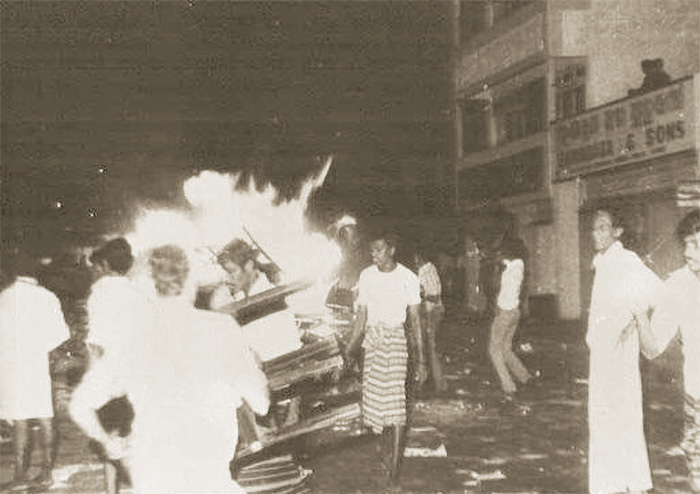
Monday 25th July 1983 began like just another day. But what we didn’t know was that it was to be the last day of an era. By mid-morning from my second-floor office in Fort I could see the city being put to the torch. Already my two sisters’ homes in the suburbs had been attacked and they were taking shelter with Sinhalese and Burgher neighbours.
After ensuring that the female staff was safely escorted home, I walked to my wife’s office in Kompannavidiya. Outside the Air Force Headquarters on Sir Chittampalam Gardiner Mawatha, gangs were stopping cars and setting them on fire. A Police jeep drove through the inferno; but the mob did not pause from their orgy of destruction. On Malay Street groups were looting and then setting shops ablaze. I watched truckloads of troops chanting ‘Jayaweva’ drive out of Army Headquarters, exhorting and encouraging the mobs.
A Sinhalese colleague accompanied us back home where we packed one briefcase with essential documents and one basket with food and necessities for Nishara, our nine-month-old baby. If we had to flee this was all we would take. When a house in the adjacent road was attacked, we took refuge with a Sinhalese neighbour.
We were among the fortunate. We survived. This article remembers the many who did not return to their homes; who came home to charred ruins; who fled to refugee camps and then into exile overseas. It honours the memories of the men, women, children and domestic animals who perished in Sri Lanka’s Holocaust.
By Jayantha Somasundaram
This article is based on reporting by the international media on the events in Sri Lanka 40 years ago.)
“I am not worried about the opinion of the Jaffna people… now we cannot think of them, not about their lives or their opinion… the more you put pressure in the north, the happier the Sinhala people will be here… Really, if I starve the Tamils out, the Sinhala people will be happy.” – President J.R. Jayewardene, Daily Telegraph (London) 11 July 1983
“Someone seemed to have planned the whole thing and waited only for an opportunity. And the opportunity came on the night of 23 July,” (Race & Class London XXVI.I [1984]). Thirteen soldiers of the 1st Battalion Sri Lanka Light Infantry were killed in a landmine explosion in Thirunelveli. Enraged troops struck back immediately. David Beresford wrote that “members of the Tamil community in Jaffna told the British Guardian troops killed a number of students waiting at a bus stop; the students aged between 18 and 20 had been lined up and fired upon. Six were killed and another two injured. Shortly afterwards troops drove through a village about five miles outside Jaffna shooting at random. Two were reported killed. Soldiers in civilian clothes were out in jeeps and raided a number of houses shooting inhabitants. In one house a family planning official was allegedly shot dead while lying on his bed and his 72-year-old father-in-law a headmaster shot sitting outside on the veranda. About 16 people were killed.
“Asked yesterday why no inquests have been held, President Jayewardene said: I didn’t know until a couple of days ago. It is too late now.” The violence then spread to Trincomalee where since early June Tamils had been subject to violence by hoodlums from the market area. On the 3rd the Mansion Hotel had been attacked. Now sailors went on a rampage destroying Hindu Temples, homes and shops. “In Trincomalee” reported The Irish Times (29.7.83), “130 sailors were under arrest after breaking out of their barracks on Monday and attacking shops and homes.”
“Only one in every 100 policemen is a Tamil. When security forces were ordered last week to protect Tamils in Trincomalee and other cities, they reportedly joined in the looting and burning,” said the London Observer (31.7.83).
A crowd had gathered at Kanatte Cemetery in Colombo for the funeral of the soldiers to be held on the 24th evening. “That night, a section of this crowd started setting fire to Tamil houses at the Borella end of Rosmead Place,” (Race & Class ibid).
On the morning of the 25th, mobs began moving right through Colombo and its suburbs waylaying Tamils and attacking them. They stopped vehicles and set ablaze those belonging to Tamils. They went through commercial areas looted shops and set them on fire. Residential areas were worked systematically and homes occupied by Tamils were attacked, looted and burned. Tamils who fell into the hands of these mobs were beaten and killed.
“There is no doubt that someone had identified the Tamil houses, shops and factories earlier. Seventeen industrial complexes belonging to some of the leading Tamil and Indian industrialists were razed to the ground, including those of the multi-millionaire and firm supporter of the ruling party, A.Y. S. Gnanam (the only capitalist in Sri Lanka to whom the World Bank offered a loan), and the influential Maharaja Organisation. The Indian-owned textile mills of Hirdramani Ltd, which used a labour force of 4,000 in the suburbs of Colombo was gutted. So was K. G. Industries Ltd, Hentley Garments, one of the biggest garment exporters…Several cinemas owned by Tamils were destroyed…Probably the worst affected area was the Pettah, the commercial centre of Colombo, where Tamil and Indian traders played a dominant role. Hardly a single Tamil or Indian establishment was left standing. A most distressing aspect of the vandalism was the burning and the destruction of the houses and dispensaries of eminent Tamil doctors – some with over a quarter of a century of service in Sinhala areas.” (Race & Class ibid)
All over the island
By midday the skyline was marked by columns of smoke as factories, shops and houses burned to the ground. A curfew was imposed at 2.00 pm but the terror did not abate, the attacks continued into the next day. “In the capital Colombo, Tamils are said to have been dragged from their cars and incinerated with petrol,” reported the London Economist (30.7.83).
Anthony Mascarenhas of the London Sunday Times wrote: “Throughout Monday Tamil shops were attacked and burned. Those who resisted perished with their property. Buses and cars were stopped and their Tamil passengers beaten up. Cars were burned and strewn all over the city. The army moved in by noon but troops turned a blind eye. Next day Tuesday, the looters took over defying the curfew. By midweek the trouble had spread all over the island. Affluent Tamils in Colombo who had hidden to escape the mobs were now singled out for attacks in their homes, which were looted and burned.”
“The capital was strewn with the wreckage of scores of shops and houses set ablaze, gutted or looted in the rioting.”(New York Times 28/7/83)
John Elliot of the London Financial Times reported from Colombo: “In each street individual business premises were burned down while others alongside were unscathed. Troops and police either joined the rioters or stood idly by. President Jayawardene failed either intentionally or because he had lost control to stem the damage.”
“By Monday night” said Asiaweek from Hong Kong (12.8.83) “the official death toll in the Greater Colombo area alone was 36 with hundreds more injured and unofficial estimates put the figure at three or four times higher. Most of the dead were helpless Tamils stranded in the city and caught by mobs while trying to flee. In the Borella area two Tamil shop-owners were burnt alive when a mob set fire to a row of shops. In Maradana a Tamil was chased by a mob brought down with stones and then hacked to death.
“On Monday while Borella was being put to the torch rioting broke out in adjacent Welikada prison. Some 400 prisoners from a section reserved for common criminals broke into the maximum-security section. Of the Tamil inmates many of whom were still awaiting trial, 37 were killed, either bludgeoned to death with iron bars or literally trampled to death.
“By Tuesday morning virtually every town in Sri Lanka with a Tamil presence bore scars of rioting. The main target, Tamil owned shops and businesses. According to one estimate more than half the country’s Tamil owned shops were gutted.
“Meanwhile the violence went on” continued Asiaweek (12.8.83). “On Thursday an incoming train from Kandy was stopped just outside the Fort station by security forces acting on a tip that Tamil terrorists were on board. One Tamil was reportedly apprehended carrying hand grenades and an automatic rifle. In the process of arresting them however, pandemonium broke out in the train and the Tamil passengers fled. Ten were run down by a mob of some 2,000 Sinhalese who doused each one with petrol and set them alight while still alive. As the victims screamed in pain the Sinhalese crowd cheered and flashed victory signs, then spilled into the streets looting and burning Tamil shops.”
Welikada Prison
“The same day saw more trouble at Welikada,” explained Asiaweek. “Sinhalese prisoners for the second time in three days broke into the maximum-security wing, this time murdering seventeen Tamil detainees. With three other Tamil inmates killed in the Jaffna jail, the total number of Tamils clubbed or trampled to death by rampaging Sinhalese prisoners was 55.”
David Beresford of The Guardian (13.8.83) recalled that ‘Kutumani’ Yogachandran and Ganeshnathan Jeganathan in speeches from the dock had announced that they would donate their eyes in the hope that they would be grafted onto those who would see the birth of Tamil Eelam. “Reports from Batticaloa jail where the survivors of the Welikada massacre are now being kept say that the two men were forced to kneel and their eyes were gorged out with iron bars before they were killed.”
On his return to London Pat O’Leary told the Associated Press “People were dragged out of their homes and then the houses were burned down. I watched a group of Sinhalese people chase a group of three Tamils. They caught one beat him up threw him to the ground and stoned him. It was terrible. Nobody did a thing to help. Even the Police turned a blind eye.”
A Norwegian woman Eli Skarstein on her return to Oslo told the press that “A mini bus full of Tamils was forced to stop just in front of us in Colombo. A Sinhalese mob poured petrol over the bus and set it on fire. They blocked the car doors and prevented the Tamils from leaving the vehicle. Hundreds of spectators witnessed as 20 Tamils were burned to death.”
“For days soldiers and policemen were not overwhelmed: they were unengaged or, in some cases apparently aiding the attackers,” reported the London Economist (6.8.83). “Numerous eye witnesses attest that soldiers and policemen stood by while Colombo burned. After two days of violence and the murder of 35 Tamils in a maximum-security jail, the only editorial in the government-run newspaper was on ‘saving our forest cover’.
“It was five days after the precipitating ambush and a day after a second prison massacre that the people of Sri Lanka heard from their President. On July 28th Mr. Jayewardene spoke on television to denounce separatism and proscribing any party that endorsed it in order to ‘appease the natural desire and request’ of the Sinhalese ‘to prevent the country being divided’. Not a syllable of sympathy for the Tamil people or any explicit rejection of the spirit of vengeance. Next day Colombo was a battle field: more than 100 people are estimated to have been killed on that Friday alone.”
Tigers in the City
On Friday 29th when a soldier accidently shot himself in the Pettah the rumour spread that ‘Tigers’ were in the City. Indian journalist M. Rahman reported how in response soldiers and Sinhalese mobs retreated to the many bridges leading out of Colombo, killing Tamils desperately trying to get back to their homes.
A middle-aged businessman whom T.R. Lanser interviewed for the London Observer (7.8.83) said “On Friday about noon a mob came to attack Tamil people in the hospital. A Tamil Inspector of Police who was visiting me was murdered, cut with knives, just as he was talking to me. He faced them and he gave us time. Even with this broken foot I ran and hid…”
Michael Hamlyn wrote in the London Times (1.8.83) “burnings and killings continued over the weekend despite a 60-hour curfew. The trouble spread on Saturday to Nuwara Eliya. There were further incidents of violence against Tamils and their property in Chilaw, Matale and Kalutara.
”There was a mass exodus of Tamils displaced from their homes. Thirty busloads of refugees were taken from a camp and embarked on a ship for the North.” The International Herald Tribune (15.8.83) in Paris quoted A. Amirthalingam leader of the TULF (Tamil United Liberation Front) and leader of the Opposition in Parliament, as saying that 2,000 people had died in two months of ethnic unrest. He said the figure included deaths in the whole island since anti-Tamil violence broke out in Trincomalee on June 3rd and culminated in riots throughout the island at the end of July.
Opinion
Thoughts for Unduvap Poya
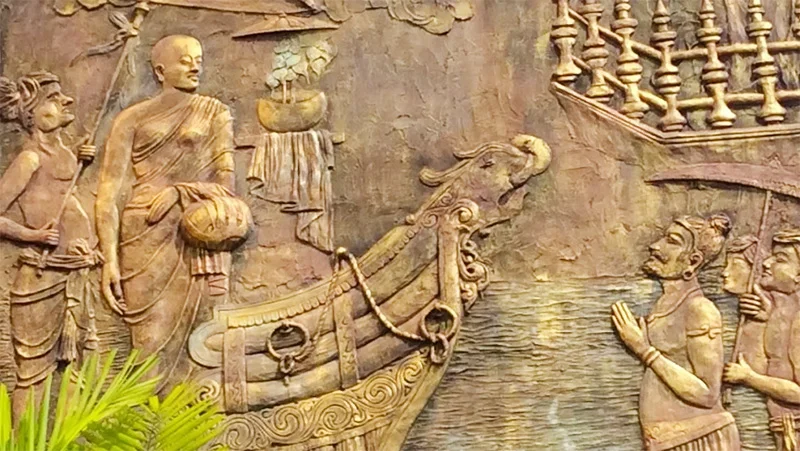
Unduvap Poya, which falls today, has great historical significance for Sri Lanka, as several important events occurred on that day but before looking into these, as the occasion demands, our first thought should be about impermanence. One of the cornerstones of Buddha’s teachings is impermanence and there is no better time to ponder over it than now, as the unfolding events of the unprecedented natural disaster exemplify it. Who would have imagined, even a few days ago, the scenes of total devastation we are witnessing now; vast swathes of the country under floodwaters due to torrential rain, multitudes of earth slips burying alive entire families with their hard-built properties and closing multiple trunk roads bringing the country to a virtual standstill. The best of human kindness is also amply demonstrated as many risk their own lives to help those in distress.
In the struggle of life, we are attached and accumulate many things, wanted and unwanted, including wealth overlooking the fact that all this could disappear in a flash, as happened to an unfortunate few during this calamitous time. Even the survivors, though they are happy that they survived, are left with anxiety, apprehension, and sorrow, all of which is due to attachment. We are attached to things because we fail to realise the importance of impermanence. If we do, we would be less attached and less affected. Realisation of the impermanent nature of everything is the first step towards ultimate detachment.
It was on a day like this that Arahant Bhikkhuni Sanghamitta arrived in Lanka Deepa bringing with her a sapling of the Sri Maha Bodhi tree under which Prince Siddhartha attained Enlightenment. She was sent by her father Emperor Ashoka, at the request of Arahant Mahinda who had arrived earlier and established Buddhism formally under the royal patronage of King Devanampiyatissa. With the very successful establishment of Bhikkhu Sasana, as there was a strong clamour for the establishment of Bhikkhuni Sasana as well, Arahant Mahinda requested his father to send his sister which was agreed to by Emperor Ashoka, though reluctantly as he would be losing two of his children. In fact, both served Lanka Deepa till their death, never returning to the country of their birth. Though Arahant Sanghamitta’s main mission was otherwise, her bringing a sapling of the Bo tree has left an indelible imprint in the annals of our history.
According to chronicles, King Devanampiyatissa planted the Bo sapling in Mahamevnawa Park in Anuradhapura in 288 BCE, which continues to thrive, making it the oldest living human planted tree in the world with a known planting date. It is a treasure that needs to be respected and protected at all costs. However, not so long ago it was nearly destroyed by the idiocy of worshippers who poured milk on the roots. Devotion clouding reality, they overlooked the fact that a tree needs water, not milk!
A monk developed a new practice of Bodhi Puja, which even today attracts droves of devotees and has become a ritual. This would have been the last thing the Buddha wanted! He expressed gratitude by gazing at the tree, which gave him shelter during the most crucial of times, for a week but did not want his followers to go around worshipping similar trees growing all over. Instead of following the path the Buddha laid for us, we seem keen on inventing new rituals to indulge in!
Arahant Sanghamitta achieved her prime objective by establishing the Bhikkhuni Sasana which thrived for nearly 1200 years till it fell into decline with the fall of the Anuradhapura kingdom. Unfortunately, during the Polonnaruwa period that followed the influence of Hinduism over Buddhism increased and some of the Buddhist values like equality of sexes and anti-casteism were lost. Subsequently, even the Bhikkhu Sasana went into decline. Higher ordination for Bhikkhus was re-established in 1753 CE with the visit of Upali Maha Thera from Siam which formed the basis of Siam Maha Nikaya. Upali Maha Thero is also credited with reorganising Kandy Esala Perahera to be the annual Procession of the Temple of Tooth, which was previously centred around the worship of deities, by getting a royal decree: “Henceforth Gods and men are to follow the Buddha”
In 1764 CE, Siyam Nikaya imposed a ‘Govigama and Radala’ exclusivity, disregarding a fundamental tenet of the Buddha, apparently in response to an order from the King! Fortunately, Buddhism was saved from the idiocy of Siyam Nikaya by the formation of Amarapura Nikaya in 1800 CE and Ramanna Nikaya in 1864 CE, higher ordination for both obtained from Burma. None of these Niakya’s showed any interest in the re-establishment of Bhikkhuni Sasana which was left to a band of interested and determined ladies.
My thoughts and admiration, on the day Bhikkhuni Sasana was originally established, go to these pioneers whose determination knew no bounds. They overcame enormous difficulties and obtained higher ordination from South Korea initially. Fortunately, Ven. Inamaluwe Sri Sumangala Thero, Maha Nayaka of Rangiri Dambulla Chapter of Siyam Maha Nikaya started offering higher ordination to Bhikkhunis in 1998 but state recognition became a sore point. When Venerable Welimada Dhammadinna Bhikkhuni was denied official recognition as a Bhikkhuni on her national identity card she filed action, with the support of Ven. Inamaluwe Sri Sumangala Thero. In a landmark majority judgement delivered on 16 June, the Supreme Court ruled that the fundamental rights of Ven. Dhammadinna were breached and also Bhikkhuni Sasana was re-established in Sri Lanka. As this judgement did not receive wide publicity, I wrote a piece titled “Buddhism, Bhikkhus and Bhikkhunis” (The Island, 10 July 2025) and my wish for this Unduvap Poya is what I stated therein:
“The landmark legal battle won by Bhikkhunis is a victory for common sense more than anything else. I hope it will help Bhikkhuni Sasana flourish in Sri Lanka. The number of devotees inviting Bhikkhunis to religious functions is increasing. May Bhikkhunis receive the recognition they richly deserve.” May there be a rapid return to normalcy from the current tragic situation.”
by Dr Upul Wijayawardhana
Opinion
Royal Over Eighties
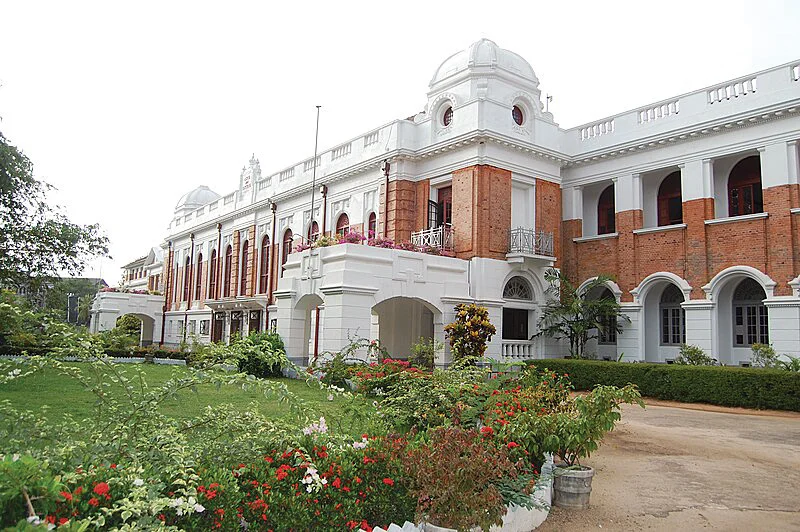
The gathering was actually of ‘Over Seventies’ but those of my generation present were mostly of the late eighties.
Even of them I shall mention only those whom I know at least by name. But, first, to those few of my years and older with whom speech was possible.
First among them, in more sense than one, was Nihal Seneviratne, at ninety-one probably the oldest present. There is no truth to the story that his state of crisp well-being is attributable to the consumption of gul-bunis in his school days. It is traceable rather to a life well lived. His practice of regular walks around the house and along the lane on which he lives may have contributed to his erect posture. As also to the total absence of a walking stick, a helper, or any other form of assistance as he walked into the Janaki hotel where this gathering took place.
Referencing the published accounts of his several decades-long service in Parliament as head of its administration, it would be moot to recall that his close friend and fellow lawyer, J E D Gooneratne, teased him in the following terms: “You will be a bloody clerk all your life”. He did join service as Second Assistant to the Clerk to the House and moved up, but the Clerk became the Secretary General. Regardless of such matters of nomenclature, it could be said that Nihal Seneviratne ran the show.
Others present included Dr. Ranjith de Silva, Surgeon, who was our cricket Captain and, to the best of my knowledge, has the distinction of never engaging in private practice.
The range of Dr. K L (Lochana) Gunaratne’s interests and his accomplishments within each are indeed remarkable. I would think that somebody who’d received his initial training at the AA School of Architecture in London would continue to have architecture as the foundation of his likes /dislikes. Such would also provide a road map to other pursuits whether immediately related to that field or not. That is evident in the leadership roles he has played in the National Academy of Sciences and the Institute of Town Planners among others. As I recall he has also addressed issues related to the Panadura Vadaya.
My memories of D L Seneviratne at school were associated with tennis. As happens, D L had launched his gift for writing over three decades ago with a history of tennis in Sri Lanka (1991). That is a game with which my acquaintance is limited to sending a couple of serves past his ear (not ‘tossing the ball across’ as he asked me to) while Jothilingam, long much missed, waited for his team mates to come for practices. It is a game at which my father spent much time both at the Railway sports club and at our home-town club. (By some kind of chance, I recovered just a week ago the ‘Fred de Saram Challenge Cup’ which, on his winning the Singles for the third time, Koo de Saram came over to the Kandana Club to hand over to him for keeps. They played an exhibition match which father won). D L would know whether or not, as I have heard, in an exhibition match in Colombo, Koo defeated Frank Sedgman, who was on his triumphant return home to Oz after he had won the Wimbledon tournament in London.
I had no idea that D L has written any books till my son brought home the one on the early history of Royal under Marsh and Boake, (both long-bearded young men in their twenties).
It includes a rich assortment of photographs of great value to those who are interested in the history of the Anglican segment of Christian missionary activity here in the context of its contribution to secondary school education. Among them is one of the school as it appeared on moving to Thurstan road from Mutwal. It has been extracted from the History of Royal, 1931, done by students (among whom a relative, Palitha Weeraman, had played a significant role).
As D L shows, (in contra-distinction to the Catholic schools) the CMS had engaged in a largely secular practice. Royal remained so through our time – when one could walk into the examination room and answer questions framed to test one’s knowledge of Christianity, Buddhism, Hinduism and Islam; a knowledge derived mostly from the lectures delivered by an Old Boy at general assembly on Friday plus readings from the Dhammapada, the Bhagavad Gita, the St. John’s version of the Bible or the Koran recited by a student at senior assembly on Tuesday / Thursday.
D L’s history of Royal College had followed in 2006.
His writing is so rich in detail, so precise in formulation, that I would consider this brief note a simple prompt towards a publisher bringing out new editions at different levels of cost.
It was also a pleasure to meet Senaka Amarasinghe, as yet flaunting his Emperor profile, and among the principal organisers of this event.
The encounter with I S de Silva, distinguished attorney, who was on Galle road close to Janaki lane, where I lived then was indeed welcome. As was that with Upali Mendis, who carried out cataract surgery on my mother oh so long ago when he was head of the Eye Hospital. His older brother, L P, was probably the most gifted student in chemistry in our time.
Most serendipitous perhaps was meeting a son of one of our most popular teachers from the 1950s, – Connor Rajaratnam. His cons were a caution.
by Gamini Seneviratne
Opinion
“Regulatory Impact Assessment – Not a bureaucratic formality but essentially an advocacy tool for smarter governance”: A response
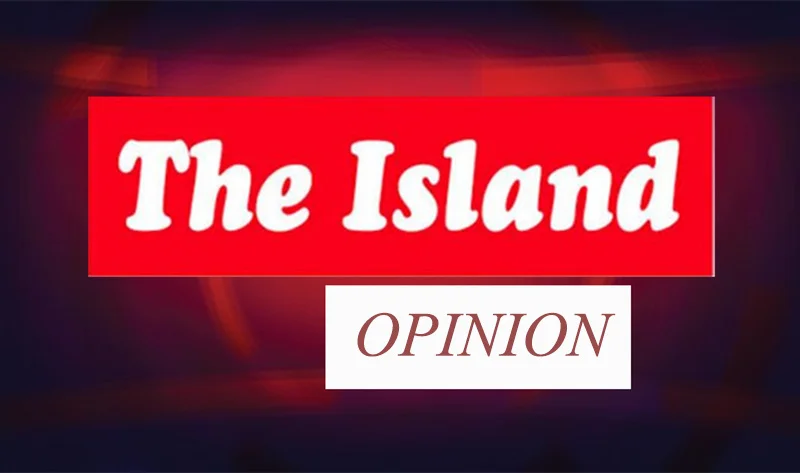
Having meticulously read and re-read the above article published in the opinion page of The Island on the 27 Nov, I hasten to make a critical review on the far-reaching proposal made by the co-authors, namely Professor Theekshana Suraweera, Chairman of the Sri Lanka Standards Institution and Dr. Prabath.C.Abeysiriwardana, Director of Ministry of Science and Technology
The aforesaid article provides a timely and compelling critique of Sri Lanka’s long-standing gaps in evidence-based policymaking and argues persuasively for the institutional adoption of Regulatory Impact Assessment (RIA). In a context where policy missteps have led to severe economic and social consequences, the article functions as an essential wake-up call—highlighting RIA not as a bureaucratic formality but as a foundational tool for smarter governance.
One of the article’s strongest contributions is its clear explanation of how regulatory processes currently function in Sri Lanka: legislation is drafted with narrow legal scrutiny focused mainly on constitutional compliance, with little or no structured assessment of economic, social, cultural, or environmental impacts. The author strengthens this argument with well-chosen examples—the sudden ban on chemical fertilizer imports and the consequences of the 1956 Official Language Act—demonstrating how untested regulation can have far-reaching negative outcomes. These cases effectively illustrate the dangers of ad hoc policymaking and underscore the need for a formal review mechanism.
The article also succeeds in demystifying RIA by outlining its core steps—problem definition, option analysis, impact assessment, stakeholder consultation, and post-implementation review. This breakdown makes it clear that RIA is not merely a Western ideal but a practical, structured, and replicable process that could greatly improve policymaking in Sri Lanka. The references to international best practices (such as the role of OIRA in the United States) lend credibility and global context, showing that RIA is not experimental but an established standard in advanced governance systems.
However, the article could have further strengthened its critique by addressing the political economy of reform: the structural incentives, institutional resistance, and political culture that have historically obstructed such tools in Sri Lanka. While the challenges of data availability, quantification, and political pressure are briefly mentioned, a deeper analysis of why evidence-based policymaking has not taken root—and how to overcome these systemic barriers—would have offered greater practical value.
Another potential enhancement would be the inclusion of local micro-level examples where smaller-scale regulations backfired due to insufficient appraisal. This would help illustrate that the problem is not limited to headline-making policy failures but affects governance at every level.
Despite these minor limitations, the article is highly effective as an advocacy piece. It makes a strong case that RIA could transform Sri Lanka’s regulatory landscape by institutionalizing foresight, transparency, and accountability. Its emphasis on aligning RIA with ongoing national initiatives—particularly the strengthening of the National Quality Infrastructure—demonstrates both pragmatism and strategic vision.
At a time, when Chairmen of statutory bodies appointed by the NPP government play a passive voice, the candid opinion expressed by the CEO of SLSI on the necessity of a Regulatory Impact Assessment is an important and insightful contribution. It highlights a critical missing link in Sri Lanka’s policy environment and provides a clear call to action. If widely circulated and taken seriously by policymakers, academics, and civil society, it could indeed become the eye-opener needed to push Sri Lanka toward more rational, responsible, and future-ready governance.
J. A. A. S. Ranasinghe,
Productivity Specialty and Management Consultant
(rathula49@gmail.com)
-
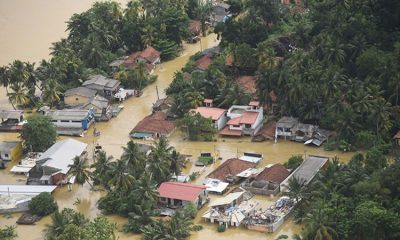
 News5 days ago
News5 days agoWeather disasters: Sri Lanka flooded by policy blunders, weak enforcement and environmental crime – Climate Expert
-
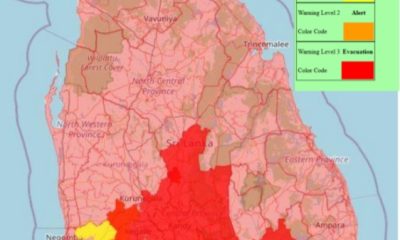
 Latest News6 days ago
Latest News6 days agoLevel I landslide RED warnings issued to the districts of Badulla, Colombo, Gampaha, Kalutara, Kandy, Kegalle, Kurnegala, Natale, Monaragala, Nuwara Eliya and Ratnapura
-
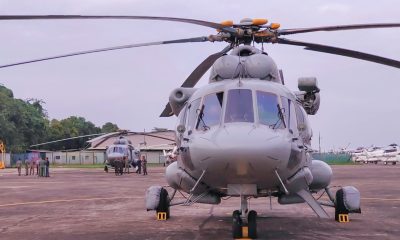
 Latest News6 days ago
Latest News6 days agoINS VIKRANT deploys helicopters for disaster relief operations
-
News2 days ago
Lunuwila tragedy not caused by those videoing Bell 212: SLAF
-

 Latest News6 days ago
Latest News6 days agoDepartment of Irrigation issues Critical flood warning to the Kelani river basin
-
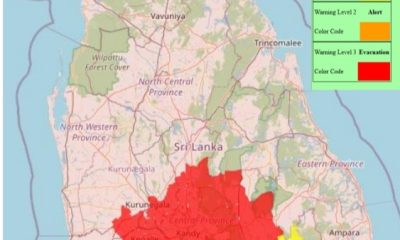
 Latest News3 days ago
Latest News3 days agoLevel III landslide early warnings issued to the districts of Badulla, Kandy, Kegalle, Kurunegala, Matale and Nuwara-Eliya
-
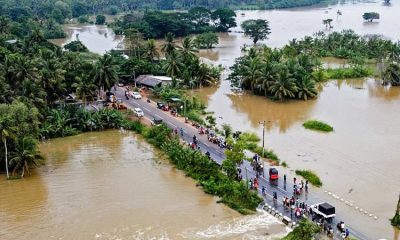
 News6 days ago
News6 days agoCountry reels under worst weather in living memory
-

 Editorial6 days ago
Editorial6 days agoNeeded: Action not rhetoric













